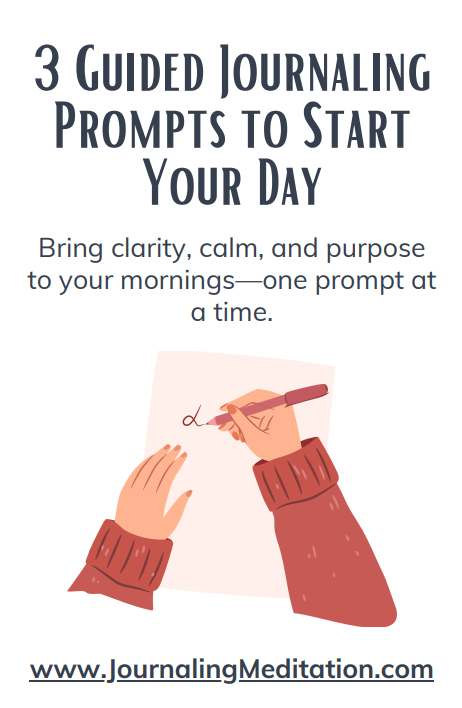
Are you new to mindfulness meditation and looking for ways to get started? Mindfulness meditation is a practice that helps you focus on the present moment, enhancing your mental clarity and emotional stability. In this article, we’ll explore various mindfulness meditation techniques beginners can start with, offering a step-by-step guide to help you ease into this amazing practice.
(This post contains affiliate links. If you make a purchase through these links, I may earn a commission at no extra cost to you.)
First, What is Mindfulness Meditation?
Mindfulness meditation is a type of meditation that involves focusing your mind on your experiences (like your own emotions, thoughts, and sensations) in the present moment. Originating from Buddhist traditions, it has become widely adopted in the West due to its benefits. Mindfulness meditation can help reduce stress, anxiety, and depression. Physically, it can lower blood pressure and improve sleep quality. Emotionally and spiritually, it promotes a sense of peace and overall well-being.
Preparing for Mindfulness Meditation
Before jumping into mindfulness meditation, try preparing yourself and your environment. Start by setting up a meditation space. Choose a quiet location where you won’t be disturbed. Make sure your seating arrangement is comfortable, whether it’s a cushion on the floor or a chair. Simple decor can help minimize distractions, creating a peaceful atmosphere conducive to meditation.
Time commitment can also be important. For beginners, starting with short sessions of 3-5 minutes can be effective. Gradually increase the duration as you become more comfortable. Early morning or late evening are often the best times to meditate, as these periods are typically quieter and allow for a more focused practice.
Mindfulness Meditation Techniques Beginners Can Use Now
1. Breathing Awareness
Breathing awareness is a fundamental mindfulness meditation technique, perfect for beginners. It involves using your breath as an anchor to keep your mind focused on the present moment.
Step-by-step guide:
- Sit comfortably with a straight back.
- Close your eyes and breathe naturally.
- Focus on the sensation of breath entering and leaving your nostrils.
Maintaining focus can be challenging at first. When your mind wanders, gently bring your attention back to your breath. This simple practice can significantly improve your concentration and calm your mind.
2. Body Scan Meditation

Body scan meditation is a technique that helps you develop a deep awareness of bodily sensations, promoting relaxation and reducing stress.
Step-by-step guide:
- Lie down or sit comfortably.
- Close your eyes and take a few deep breaths.
- Slowly bring your attention to each part of your body, starting from your toes and moving up to your head.
- Notice sensations without judgment.
Beginners should take it slow and be patient with themselves. This technique can help you connect with your body and release tension.
3. Loving-Kindness Meditation (Metta)
Loving-kindness meditation, or Metta, focuses on developing compassion and love towards yourself and others. It’s particularly helpful for improving emotional well-being.
Step-by-step guide:
- Sit comfortably and close your eyes.
- Start by directing love and kindness towards yourself with phrases like, “May I be happy, may I be healthy, may I be safe.”
- Gradually extend these wishes to loved ones, acquaintances, and even difficult people.
Maintaining a compassionate mindset can be challenging but is rewarding. This practice fosters empathy and emotional resilience.
4. Walking Meditation
Walking meditation combines movement with mindfulness, making it an excellent option for those who find sitting still challenging.
Step-by-step guide:
- Choose a path where you can walk undisturbed.
- Walk slowly and mindfully, paying attention to each step.
- Synchronize your breath with your steps.
Incorporating walking meditation into your daily routine can provide a refreshing break and help integrate mindfulness into everyday activities.
5. Task Oriented Mindfulness
Using everyday, mundane but necessary tasks and household chores are a great way to practice mindfulness while getting things done.
Step-by-step guide:
- Whether it’s the dishes, laundry or vacuuming, be present with the task.
- Notice the sensations around you (the sound of clinking dishes or the softness of the laundry) as you perform the chore.
- Stay present with the task with deep grounding breathes.
Mindfulness is all about being present. And doing everyday chores to find that presence is a beautiful use of that time.
Overcoming Common Challenges in Mindfulness Meditation
Meditation can come with its own set of challenges, especially for beginners. A restless mind is a common issue. When your mind wanders, use gentle techniques to bring your focus back to your breath or chosen focal point.
Physical discomfort is another challenge. Adjust your posture as needed and consider using cushions or props for added comfort. Remember, the goal is to find a position that allows you to be alert yet relaxed.
Be prepared to control your expectations. Avoid frustration by setting realistic goals and focusing on progress rather than perfection. Meditation is a journey, and every session contributes to your overall growth.
Additional Tips for Mindfulness Meditation Beginners
Consistency is key to experiencing the benefits of mindfulness meditation. Develop a regular practice by setting aside the same time each day for meditation. Journaling your meditation experiences can also be beneficial. It allows you to track your progress and reflect on your journey. Use prompts like “What did I notice during my meditation today?” or “How did I feel before and after meditating?”
Community support can enhance your practice even more. Join meditation groups or online forums to connect with like-minded individuals. Attending workshops or classes can provide additional guidance and inspiration.
For more detailed information on mindfulness meditation and its benefits, you can check out resources like Mindful.org for comprehensive guides and articles.
FAQ Section
To help you even more, here are answers to some common questions beginners have about mindfulness meditation:
How can you start practicing mindful meditation?
- Starting mindful meditation involves finding a quiet space, sitting comfortably, and focusing on your breath. Begin with short sessions of 3-5 minutes and gradually increase the duration as you become more comfortable with the practice. Consistency is key, so try to meditate at the same time each day.
What is meditation: 5 steps for beginners to start meditation?
- Find a quiet place: Choose a spot where you won’t be disturbed.
- Sit comfortably: Use a cushion or chair to support good posture.
- Set a timer: Start with 3-5 minutes.
- Focus on your breath: Pay attention to the sensation of breathing.
- Gently return: When your mind wanders, gently bring it back to your breath.
What are the 5 steps of mindfulness?
- Observe: Notice what’s happening in the present moment.
- Describe: Mentally label your experiences.
- Participate: Fully engage in the moment without distraction.
- Non-judgment: Accept your experiences without labeling them as good or bad.
- One-mindfulness: Focus on one thing at a time with full attention.
How do I teach myself mindfulness?
- Teaching yourself mindfulness involves regular practice and patience. Start with basic techniques like breathing awareness and gradually explore other methods such as body scan and loving-kindness meditation. Take advantage of resources such as books, apps, and online courses to guide your practice.
How to start meditating daily?
- To start meditating daily, set a specific time each day for your practice. Create a routine by incorporating meditation into your daily schedule. Begin with short sessions and gradually extend the time as you become more comfortable. Consistency and dedication are crucial for establishing a daily meditation habit.
Conclusion
Starting with simple mindfulness meditation techniques, beginners can build a strong foundation for the practice. As you explore these techniques, you’ll find the ones that resonate best with you and help enhancing your mental, physical, and emotional well-being. Share your experiences and questions in the comments below—I’d love to hear from you!
Feel free to leave any comments or questions about your mindfulness meditation journey—what’s been working for you, or any challenges you’re facing? Let’s support each other in this mindful journey!






